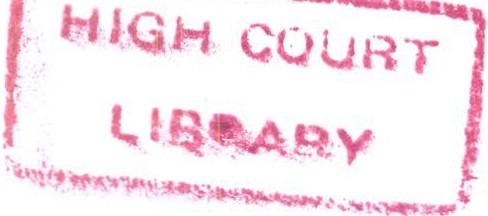

IN THE HIGH COURT OF MALAWI
PRINCIPAL REGISTRY
CRIMINAL DIVISION
CRIMINAL CASE NO. 3 OF 2016
BETWEEN:
CHIMWEMWE CHIMBANGA ..........................................APPELLANT
-V -
THE REPUB LIC...........................................................RESPONDENT
 Coram: Hon. Justice M L Kamwambe
Coram: Hon. Justice M L Kamwambe
Salamba of counsel for the State
Maele of counsel for the Appellant
Phiri...Official Interpreter
Kamwambe J
JUDGMENT

On the 7th day of January, 201 6 the Appellant was convicted of the charge of defilement contrary to section 138(1) of the Penal Code. The girl he is alleged to have had carnal knowledge of was alleged to be 14 years. The Appellant was her guardian on home based care. He plead not guilty and was convicted after a full trial. This application is a petition of appeal made under section 350 (1)
of the Criminal Procedure and Evidence Code. The grounds of appeal are as follows:
1. The learned magistrate erred in law holding that the medical report containing the age of the complainant was admissible to prove the age of the complainant under section 180 of the Criminal Procedure and Evidence Code (CP& ED) when the report was not a report of the age examination of the complainant.
2. The sentence of 12 years IHL is manifestly excessive 1n the circumstances of the case.
In a defilement case the prosecution must prove first and foremost that the accused person had carnal knowledge of a girl and that the girl was under the age of 1 6 years at the time the offence was committed. In her evidence PW 1 , the complainant and victim did not at any time mention her age, the Appellant argues. PW3, victim's aunt also did not give evidence of the age of PW l. Exhibit P l is the document which carried evidence of the age of PW 1 . This is a medical report tendered by PW2, a doctor or clinician. It reflected the age to be 14 years. This has given rise to the question whether the medical report could be proof of the age of the victim. The Appellant has referred us to section 180 of the CP&EC which reads as follows:
(l) " Whenever any facts ascertained by any examination, including the examination of any person or body, or by any process requiring any skill in pathology, bacteriology, biology, chemistry, medicine, physics, botany, astronomy or geography or any body of knowledge or experience sufficiently organised or recognized as a reliable body of knowledge or experience and the opinions thereon of any person having that skill are or may become relevant to the issue in any criminal proceedings, a document purporting to be a report of such facts and opinions, by any
person qualified to carry out such examination or process (in this section ref erred to as an expert) who has carried out any such examination or process shall, subject to subsection (5), on its mere production by any party to those proceedings, be admissible in evidence therein to prove those facts and opinions if one of the conditions specified in subsection (3) is satisfied."
(3) " The conditions ref erred to in subsection (1) are:
a) That the other parties to the proceedings consent; or
b) That the party proposing to tender the report has served on the other parties a copy of the report and, by endorsement on the report or otherwise, notice of his intention it in evidence and none of the parties has, within seven days from such service, served on the party so proposing a notice objecting to the report being tendered in evidence under this section."
This section is an exception to the hearsay rule so long that it has been complied with. From this section it ought to be proved that there was a report of an examination or process of the fact in issue by an expert. If the document is not a report on some fact in issue, or it does not arise from an examination or process, then the document would not be admissible in evidence. I have carefully looked at Exhibit P 1 and the evidence around it and I find that on the top right is written age: 14, then below Esmy Chilombo, the aunt to the victim, is shown to have given consent f or the doctor to carry out the examination or process. The question which has no answer at the moment is how the age 14 found itself on the report. May be the doctor made inquiries from the likes of Esmy Chilombo, but would that be conclusive evidence of the age of the victim? Yes, since it is part of the report exempted from the hearsay rule.
The lower court in its judgment stated on page 1 1 as follows:
"A medical report containing the evidence of the age of PW 1 is admissible in evidence proving the age of PW 1. Exhibit P 1 which is the medical report shows that PW 1 is aged 14. The accused was served and never objected to its being tendered. I therefore find that PW 1 is a girl aged 14 years thus aged less than 16 years."
This is the basis of the contention.
It is necessary to consider some cases such as Chipala -v- Rep. [1993] 16 (2) MLR 498 W L, ch at 499 stated:
"It seems to me that other than a certificate of a medical practitioner, or his oral testimony, to the effect that, in his opinion, such a person has or has not attained a specified age, or other documentary proof, or the testimony of a person who has personal knowledge gained at the time of such person's birth, such as parents, no other evidence is receivable as proof of the age of such a person."
And in Hastings Nswana -v- Rep Criminal Appeal No.21 of 2010 it said:
"I have carefully perused section 180 ( 1 ) of the Criminal Procedure and Evidence Code and I am satisfied that a report such as a medical report in this action is admissible in evidence upon the mere production by a part y to the proceedings to prove the facts in relation to which the examination was made. " (My emphasis)
In Rep -v- Zobvuta [ 1994] MLR 317 the court said:
"...age of a complainant (victim) has to be strictly proved (R -V - Rogers 10 Cr App R 276). It is not necessary
that there should be a birth certificate. In Malawi this may be impossible. Age could be proved by those who have seen the child or even by a school teacher, ...the medical report containing evidence of the age of the complainant can be admissible under section 180 of the Criminal Procedure and Evidence Code as Jong as the conditions for admission of such evidence as an exception to the rule on hearsay evidence set out in section 180 (3) of the section are satisfied, for example if the accused had been served with the report and has consented to its admission." (My emphasis)
Skinner CJ considered the matter in Mapwesa - v - Rep. (1984-86) where in clarifying the point he said:
"In order for a medical report to be admissible under section 180 without its maker being called, certain conditions must be satisfied. These are contained in subsection (3) which provides that either the other party the appellant in this case has consented to its production or that the party proposing to tender the report the prosecution in the instant case has served on the other party a copy of the report and by endorsement on the report or otherwise notice of his intention to tender in evidence."
The Appellant is not contesting that the report is not admissible, but he is saying that the content of age is not admissible as it is strictly not what the report is all about.
I Find that the case of Rep -v- Zobvuta (supra) to be on four walls with this case. The only obvious difference is that in Zobvuta case the Appellant was not represented while in our present case he was represented. This has consequences which the judge clearly presented as follows:
" . ..once the other part y has been served with a copy, it is the duty of the recipient to notify the serving part y of objection to production of the report . . ..
If the proposing part y has complied with all the requirements as to service, failure to object by not serving a notice of objection makes the report admissible and the opposing party's consent is unnecessary. Section 180 as a whole should be treated cautiously where like here, the accused is not represented. The trial court must ensure that the party not represented by counsel appreciates the procedure and consequences of the report being admitted in court. When the report was being tendered, the accused was not asked if he consents to its production. This was the more important. There is nothing on the record to show that the prosecution proceeded on the basis of subsection (3b). The report should be rejected. The parent and guardian did not testify to the age of the complainant. The State did not prove strictly that the complainant was under the age of 13 years. A court should always regard the elements of an offence and decide whether there is evidence on such element constituting the crime. The age of the complainant is so fundamental to a conviction for defilement that the court has to make a finding on it. The conviction of the accused ....cannot be sustained."
Looking closely at this case I see that if the report was admissible, even if the parents did not testify to the age of the victim, the report would have carried sufficient evidence as to the age of the victim depicted thereon. Obviously the report was inadmissible due to the injustice caused on the unrepresented accused person. In our present case, the accused was represented as such it would not be possible to impute any injustice .
When the judge is referring to the report he means the report as a whole without dividing it into facts in issue of examination and facts stating the introductory part. The intention of the legislature was to consider the report as a whole, the name and age being integral part of the whole. Assuming the name of the victim and her address were alien or different, the accused person would not just lie low believing that they are not essential parts of the report. For this reason, and for the reason that accused was represented, the whole report is admissible and the lower court did not err to accept the evidence of age as provided in the report. The appeal on conviction fails.
The Appellant was sentenced to 12 years imprisonment. The younger the victim the more the sentence it attracts. Where the girl victim is below 12 years of age sentences below 12 years IHL should be imposed. Where one of the victims was one year and nine months I found that a sentence of 18 years is not outrageous. In our present case, the victim is on record to have been 14 years at the commission of the crime. The Appellant was a first offender but elderly at 37. He was the caretaker of the girl victim and took advantage of the relationship to abuse her. In fact, the victim was Appellant's patient at a clinic providing her with necessary medicines. He defiled her several times till she got pregnant. He abused his position of trust which is unethical. Further, the Appellant dominated over the girl victim in that she followed what he said. He used to threaten her into having sex as she said as follows:
"One day he told me to sleep with him. I was coming from church...He took me to his house touched my breasts and then undressed me. He also undressed himself. I refused to have sex with him. He went into another room and brought a knife with a small black handle and threatened me. He then had sex with me
I used to go to his house every Saturday and Sunday to have sex with him."
She was powerless. She was dependent upon the Appellant for provision of medicines because she had been sickly since her young age. This is how she met the Appellant when she went at the clinic where the Appellant worked. In this age the girl child needs to be protected hence the various instruments created to fulfil this purpose. The Appellant has brought out some cases as guide to sentencing trends in Malawi. But we should bear it in mind that this crime is shamelessly very rampant to the extent of even family members abusing girl children.
In Rep - v- Stephano Boniface Confirmation Case No. 215 of 2008 a 4 year sentence was enhanced to 8 years imprisonment. The convict was young and first offender. The court said that this offence is serious as it has a long lasting psychological trauma on the victim and children ought to be protected from such perpetrators.
In Republic - v- Albino Antonio Confirmation Case No. 979 of 2009, the convict relatedly defiled a 4 year girl child. He was sentenced to 10 years IHL. He was a first offender. On confirmation the sentence was enhanced to 12 years IHL.
In Republic -v - Mailosi Mvuhula Confirmation Case No. 347 of 2008, the convict was sentenced to 60 months IHL as a young first offender who pleaded guilty, He defiled his 5 year daughter. On confirmation the sentence was raised to 8years IHL. In my court I would have raised further the sentence to over 10 years.
In Republic - v - Brian Matiya Confirmation Case No. 161 of 2008 the court said that pleas of being a young and first offender should not be entertained because the interest should be on the girl's life and that if we entertain such, we are killing our society .
I have outlined already the aggravating circumstances in this case. They are serious aggravating circumstances. The girl was school going and the Appellant was busy distracting her and killing her future. He was heartless. He does not deserve lenience. I would not be shocked with the sentence of 12 years and as such, I uphold it.
Pronounced in Open Court this 6th day of January, 2017 at Chichiri, Blantyre.
![]()
M L Kamwambe
JUDGE
CRIMINAL DIVISION II
CRIMINAL DIVISION •